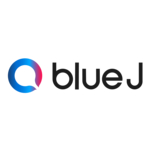A bowl of cards
Imagine this. Six people are having dinner in the US, talking about the latest trends in fintech and reminiscing about the day that they had.

In the US, contactless payments continue to feel like a luxury or an exception rather than the default
“What’s going on with RTP and FedNow? For real this time?”
“Wait, no more cheques?”
“What do you think about Walmart?”
“The market in the US is all too boring.”
Then came the bill for the meal.
Six credit cards were swiftly deposited into a bowl. And the lovely lady named Theo (what a coincidence) returned with six cards and 12 paper receipts.
True story. We know, because this is what happened at our dinner recently in Las Vegas. And the same thing happened not too long ago in San Francisco.
The irony, of course, is that the technology exists for a vastly different experience. For some of our friends from Europe and Asia who came to visit, the experience was a bit bewildering. Who still signs paper receipts these days?
How did we get here? Or is that a rhetorical question?
The disruption that we’re still waiting for
Let’s hop around the world for a minute. You are in the heart of London, grabbing a quick coffee before a meeting. You tap your card, or even your phone or smartwatch, on the payment terminal, and within seconds, it’s done. No fumbling with receipts or signing anything, no mental math for figuring out the tip. The same thing happens if you’re hopping on the tube or settling your tab at a restaurant. It’s seamless, efficient, and honestly, even beautiful.
Similarly in Asia, where millions of people have embraced a cashless way of living and where QR code payments have been the norm for well over a decade. Want to pay someone instantly or split the lunch bill? Just type in your friend’s mobile number and send money instantly and for free using either the Faster Payment System (FPS) or via PayMe by HSBC — for users in Hong Kong with a local mobile phone number and bank account (and not necessarily a HSBC one). Octopus — a popular stored value card that has been around since 1997 — also acts as a digital wallet that Hongkongers use for public transportation and retail purchases.
While each country has a myriad of local digital wallets, some of the bigger brands offer unique cross-border payments features. For instance, Alipay+, a digital platform for cross-border payments offered by the tech giant Ant International, combines 36 mobile payment methods (including Alipay, LinePay, and GCash) into a single plug-in solution, enabling over 1.6 billion customers to pay with their preferred local wallets and banking apps while traveling anywhere in the world.
As a sign of how prevalent digital wallets are in these regions, Mastercard launched Mastercard Pay Local to enable consumers to make card-based payments using local digital wallets in Asia, Latin America, Eastern Europe, the Middle East, and Africa. International travellers can now simply link their Mastercard credit or debit cards to a participating local digital wallet and use the local digital wallets to pay merchants.
Now, compare and contrast the overseas experience with ours during dinner in the US. “Can I tap?” often gets a blank stare and contactless payments continue to feel like a luxury or an exception rather than the default. Europe and Asia have embraced universal contactless, which still feels like a fever dream stateside, where “please swipe or insert” continues to reign.
One of the reasons why we seem to be slow in catching the contactless payments wave is due to the sheer size of our market and how fragmented we are with the number of banks that we have, compared to Europe, for example. But we reckon that another reason for the slow adoption could simply be due to human nature. Old habits die hard, one might say. “If it ain’t broke, don’t fix it.” And a few years ago, the mere mention of “pay by QR code” was often met with scepticism and eye rolling. “Why would we need that if what we have works?”
It was only recently (in July 2024) that Target announced it would no longer accept personal cheques for payments. Meanwhile, even though the use of cheques in business transactions has reduced significantly over the years, their usage in the US remains higher compared to other countries.
Merchants also play a pivotal role in what has been a slow adoption of contactless payments. While the technology to enable tap-to-pay or QR code transactions has been widely available, many businesses are hesitant to upgrade their legacy systems due to perceived costs, operational disruptions, or a perceived lack of consumer demand. Small to mid-sized merchants in particular often view these changes as unnecessary expenditures rather than investments in efficiency and customer experience.
Where shall we begin?
At the other end of the spectrum, while real-time payments is not a new concept and RTP networks have existed around the world for a long time, it wasn’t until 2017 that the first RTP network was launched in the US by the Clearing House. Six years later, in 2023, the Federal Reserve released FedNow, a centrally owned and operated real-time payments network designed to support financial institutions of all sizes in the US. All in, central banks in more than 50 countries have already implemented instant payments networks.
As we look towards 2025, what does the future of payments hold?
Perhaps it’s time to take another look across the ocean.
 About the authors
About the authors
Theodora Lau is the founder of Unconventional Ventures, a public speaker, and an advisor. She is the co-author of The Metaverse Economy (2023) and Beyond Good (2021), and host of One Vision, a podcast on fintech and innovation. She was named one of American Banker’s Most Influential Women in FinTech in 2023. She is also a regular contributor and commentator for top industry events and publications, including BBC News and Finovate. All opinions are her own – feel free to debate and comment below!
 Pam Kaur is the Head of Bank Technology at BankTech Ventures, where she provides guidance to bank-enabling fintechs on what’s needed to become the best fit for community banks and works directly with limited partner banks to ensure they have all the resources and information necessary to ease their digital transformation journey. Prior to joining BankTech, Pam led an Information Technology team at a $5bn+ community bank in CA. She received her Bachelor of Science in Computer Science from University of the Pacific and her Master of Science in Information Technology Management from Golden Gate University.
Pam Kaur is the Head of Bank Technology at BankTech Ventures, where she provides guidance to bank-enabling fintechs on what’s needed to become the best fit for community banks and works directly with limited partner banks to ensure they have all the resources and information necessary to ease their digital transformation journey. Prior to joining BankTech, Pam led an Information Technology team at a $5bn+ community bank in CA. She received her Bachelor of Science in Computer Science from University of the Pacific and her Master of Science in Information Technology Management from Golden Gate University.











































